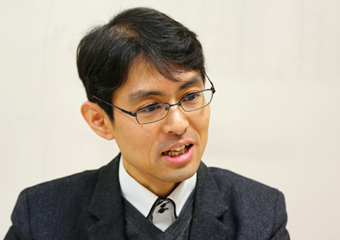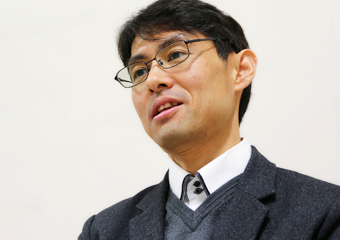
When he entered Natural Sciences I at the University of Tokyo after graduating from Nada High School, Kanae had almost no interest in either the environment or civil engineering as a major. However, after he entered university, he became more interested in these subjects as he read more books on the environment. Then he started to worry about the three alternatives he had when he went on to specialized coursework.
"I wondered which way I should go, the Department of Civil Engineering or the Department of Geophysics (Earth and Planetary Sciences), or even the Department of Forestry in the Faculty of Agriculture which is an unusual choice for students in Natural SciencesⅠ. Finally, swayed by a photo of the Kachidoki Bridge in a civil engineering brochure, I decided to enter the Department of Civil Engineering. In the end, I became a researcher of rivers flowing under bridges [laughter]." Kanae smiles with an embarrassed look on his face. The Kachidoki Bridge over the Sumida River is known as one of the biggest bascule bridges in Japan. When he saw the rounded shape of the bridge, his tuition told him that, "Anyone who can create such a beautiful object can't be bad!" His decision was cemented.
As a matter of fact, there is a sequel to this story."Nowadays, I stay in contact with people every day through email. In addition to civil engineers, many of them are in geophysics or agriculture. So, regardless of the other routes I could have taken, I would have arrived at almost the same place I'm at now."
. Any information published on this site will be valid in relation to Science Tokyo.










